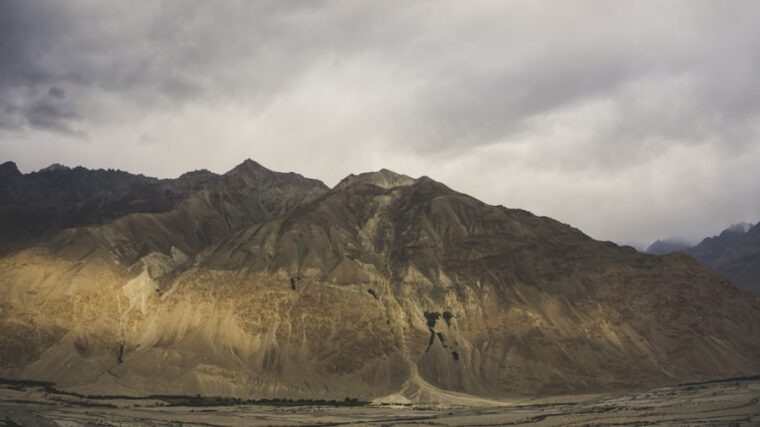Tajikistan is a country with a rich and diverse culture, shaped by its history and the influences of various ethnic groups. The majority of the population in Tajikistan is ethnically Tajik, and the culture is heavily influenced by Persian and Islamic traditions. The people of Tajikistan are known for their hospitality and warmth, and visitors to the country are often greeted with open arms. It is important to be respectful of the local customs and traditions when visiting Tajikistan, as the people take great pride in their cultural heritage.
One of the most important aspects of Tajik culture is the concept of “namoos,” which refers to a sense of honor and dignity. It is important to be mindful of this when interacting with locals, as disrespecting someone’s namoos can be deeply offensive. Additionally, it is customary to remove your shoes before entering someone’s home, and it is polite to bring a small gift when visiting someone for the first time. The traditional clothing of Tajikistan is also an important part of the culture, with many women wearing colorful dresses and headscarves, and men wearing traditional robes and hats. Overall, taking the time to understand and respect the culture and customs of Tajikistan will greatly enhance your experience in the country.
Tajikistan is also a predominantly Muslim country, and it is important to be mindful of Islamic customs and practices. During the holy month of Ramadan, it is respectful to refrain from eating, drinking, or smoking in public during daylight hours, as many locals will be fasting. It is also important to dress modestly when visiting religious sites, and women should cover their heads with a scarf. Understanding and respecting these customs will show that you are considerate of the local culture and traditions.
Navigating Transportation and Getting Around Tajikistan
Getting around Tajikistan can be an adventure in itself, as the country’s rugged terrain and remote locations can make transportation a challenge. The most common form of transportation in Tajikistan is by shared taxi or minibus, which are known as “marshrutkas.” These vehicles can be crowded and uncomfortable at times, but they are a convenient and affordable way to travel between cities and towns. It is important to be prepared for long and bumpy rides, as many roads in Tajikistan are unpaved and in poor condition.
For those looking for a more comfortable and reliable mode of transportation, there are also private taxis available for hire. While these may be more expensive than marshrutkas, they offer a more comfortable and flexible way to travel around the country. It is important to negotiate the fare with the driver before starting your journey, as there are no meters in most taxis in Tajikistan.
Another popular way to get around Tajikistan is by hiring a car and driver, especially for those looking to explore the more remote regions of the country. This option provides flexibility and allows you to travel at your own pace, but it can be quite expensive. It is also important to note that driving in Tajikistan can be challenging, as many roads are in poor condition and driving standards may be different from what you are used to. Overall, navigating transportation in Tajikistan requires patience and flexibility, but it is all part of the adventure of exploring this beautiful country.
Exploring the Natural Beauty of Tajikistan: Mountains, Lakes, and National Parks
Tajikistan is a land of breathtaking natural beauty, with its rugged mountains, pristine lakes, and lush national parks. The Pamir Mountains, also known as the “Roof of the World,” are one of the most iconic features of Tajikistan’s landscape. These towering peaks offer some of the most spectacular trekking opportunities in the world, with stunning views and unique cultural experiences along the way. The Fann Mountains are another popular destination for outdoor enthusiasts, with their crystal-clear lakes and picturesque valleys providing endless opportunities for hiking, camping, and wildlife spotting.
For those looking to experience the tranquility of nature, Tajikistan’s numerous lakes offer a peaceful escape from the hustle and bustle of city life. Lake Iskanderkul, nestled in the Fann Mountains, is a popular destination for its stunning turquoise waters and surrounding alpine scenery. The Yashilkul Lake in the Pamir Mountains is another must-see destination, offering a serene setting for camping and birdwatching.
Tajikistan is also home to several national parks that showcase the country’s diverse ecosystems and wildlife. The Pamir National Park, located in the eastern part of the country, is a UNESCO World Heritage Site that protects a vast area of high-altitude wilderness. The park is home to rare species such as snow leopards, Marco Polo sheep, and ibex, making it a paradise for nature lovers and wildlife enthusiasts. Overall, exploring the natural beauty of Tajikistan offers a chance to connect with the country’s stunning landscapes and immerse yourself in its rich natural heritage.
Sampling the Delicious Cuisine of Tajikistan
Tajik cuisine is a delightful blend of flavors and influences from Central Asia, Persia, and Russia, offering a unique culinary experience for visitors to the country. The staple food in Tajikistan is bread, which is often served with every meal and holds great cultural significance. Traditional bread ovens can be found in many homes and villages throughout the country, producing delicious flatbreads known as “non” that are enjoyed with every meal.
One of the most popular dishes in Tajik cuisine is “plov,” a hearty rice pilaf that is often made with lamb or beef, carrots, onions, and a variety of spices. Plov is considered a national dish in Tajikistan and is often served at weddings, celebrations, and other special occasions. Another beloved dish is “osh,” a savory soup made with meat, vegetables, and legumes that is enjoyed throughout Central Asia. Osh is often served with a side of yogurt or sour cream for added richness.
Tajik cuisine also features an array of delicious breads, pastries, and sweets that are enjoyed as snacks or desserts. “Samsa” is a popular pastry filled with meat or vegetables that is often enjoyed as a quick snack or street food. For those with a sweet tooth, “halva” is a popular dessert made from ground sunflower seeds or sesame seeds mixed with sugar or honey. Overall, sampling the delicious cuisine of Tajikistan offers a chance to savor the unique flavors and culinary traditions of this vibrant country.
Immersing Yourself in the History and Architecture of Tajikistan
Tajikistan boasts a rich history that dates back thousands of years, with evidence of ancient civilizations scattered throughout the country. One of the most iconic historical sites in Tajikistan is the city of Penjikent, which was once an important center along the ancient Silk Road. The ruins of Penjikent offer a fascinating glimpse into the region’s past, with well-preserved frescoes, temples, and palaces that date back to the 5th century.
The city of Khujand is another historical gem in Tajikistan, with its roots dating back over 2,500 years. Khujand was an important trading hub along the Silk Road and has been influenced by various cultures throughout its long history. Visitors can explore historical sites such as the Khujand Fortress, which offers panoramic views of the city and surrounding mountains.
Tajikistan is also home to several impressive examples of Islamic architecture, including mosques, mausoleums, and madrasas that showcase the country’s rich cultural heritage. The Hissar Fortress near Dushanbe is one such example, with its ancient walls and towers standing as a testament to Tajikistan’s historical significance. The Khoja Mashad Mausoleum in Kulyab is another architectural marvel that dates back to the 12th century and features intricate tilework and ornate domes.
Overall, immersing yourself in the history and architecture of Tajikistan offers a chance to connect with the country’s rich cultural heritage and gain a deeper understanding of its past.
Interacting with the Friendly Locals and Learning the Language
The people of Tajikistan are known for their warm hospitality and friendly nature, making it easy for visitors to connect with locals and immerse themselves in the local culture. It is common for locals to greet each other with a handshake or a light hug, so don’t be surprised if you are greeted in this manner when meeting new people in Tajikistan. It is also customary to address people using their first name followed by their father’s name (for example: Ali ibn Ahmed), as a sign of respect.
Learning a few basic phrases in Tajiki, the official language of Tajikistan, can go a long way in building rapport with locals and showing that you respect their culture. Simple greetings such as “Salam” (hello) or “Rahmat” (thank you) are always appreciated by locals and can help break down language barriers. Many people in urban areas also speak Russian, so knowing a few phrases in Russian can also be helpful when interacting with locals.
Participating in local customs and traditions can also help you connect with locals on a deeper level. For example, attending a traditional tea ceremony or sharing a meal with a local family can provide valuable insights into Tajik culture and create lasting memories.
Overall, interacting with the friendly locals and learning the language offers a chance to forge meaningful connections and gain a deeper appreciation for the people of Tajikistan.
Staying Safe and Healthy While Traveling in Tajikistan
While Tajikistan is generally considered safe for travelers, it is important to take certain precautions to ensure your safety and well-being during your visit. The political situation in Tajikistan has been relatively stable in recent years, but it is always wise to stay informed about current events and potential risks before traveling to any foreign country.
Tajikistan’s remote mountainous regions can present unique challenges for travelers, including harsh weather conditions and limited access to medical facilities. It is important to be prepared for these challenges by packing appropriate clothing for varying weather conditions and carrying essential medications or first-aid supplies.
When it comes to food and water safety, it is advisable to stick to bottled water and avoid consuming raw or undercooked foods that may pose a risk of foodborne illness. It is also wise to carry hand sanitizer or disinfectant wipes for times when soap and water may not be readily available.
In terms of personal safety, it is important to be mindful of your surroundings and take common-sense precautions such as avoiding poorly lit areas at night and keeping valuables secure at all times. It is also advisable to register with your embassy or consulate upon arrival in Tajikistan so that they can provide assistance in case of an emergency.
Overall, staying safe and healthy while traveling in Tajikistan requires vigilance and preparedness but should not deter you from experiencing all that this beautiful country has to offer. By taking these precautions into account while exploring Tajikistan’s natural beauty, sampling its delicious cuisine, immersing yourself in its history and architecture, interacting with its friendly locals, learning its language – you can ensure a safe and enjoyable travel experience in this captivating destination.


